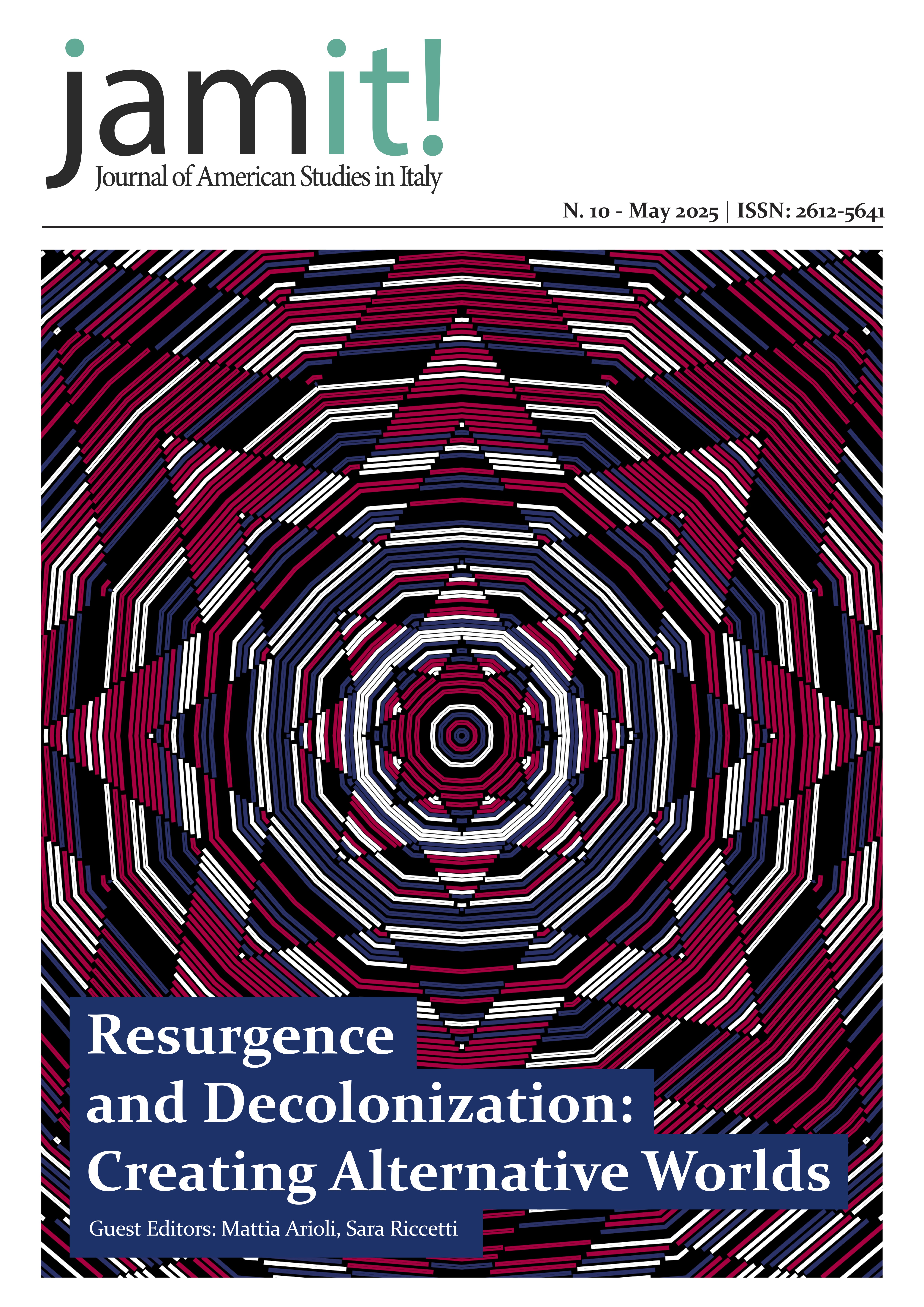Resurgent Water in Nishnaabeg Storytelling
Leanne Betasamosake Simpson's "She Sang Them Home" and "Big Water"
DOI:
https://doi.org/10.13135/2612-5641/10166Keywords:
Nishnaabeg, storytelling, Anishinaabemowin, Resurgent Water, Blue HumanitiesAbstract
Drawing on Indigenous resurgence, the regenerative movement that revitalizes languages, traditions, and cultures while aiming at pan-Indigenous sovereignty, this paper focuses on Nishnaabeg resurgent advocacy and aesthetics. The Nishnaabeg (Ojibwe, Michi Saagiig, Chippewa, Algonquin, Salteaux, and Odawa) are a transnational Indigenous people whose ancestral land spreads across the two sides of the US-Canada border. Due to the several freshwaters that cross Nishnaabeg land, colonial dispossession and extractivism in this region have systematically affected bodies of water. Water symbolism is also present in the aandisokaanan, the traditional creation stories of the Nishnaabeg inspired by the land and revived through land-based practices. Finally, the Nishnaabeg resurgent advocacy is deeply soaked into water, as evidenced by the Mother Earth Water Walks (MMEW) movement. Inspired by cultural reinvigoration and political advocacy, Nishnaabeg artists continue to generate dibaajimowinan, new stories of resurgence, in which water still constitutes a fil rouge. Given these premises, this paper presents two Nishnaabeg water stories by Michi Saagiig Nishnaabeg scholar, writer, and artist Leanne Betasamosake Simpson, who contributed to the resurgent scholarship by theorizing Radical Resurgence (2017a). Engaging with water symbolism, the first section analyzes Simpson’s song “She Sang Them Home” published in her debut collection Islands of Decolonial Love (2015). Focusing on the author’s use of code-switching, whereby the Nishnaabeg language is inserted without translation in the poetic flow, this section meditates on resurgent “storied waterscapes” (Oppermann, 2023). Adopting a hydrofeminist perspective (Neimanis, 2017), the second section presents Simpson’s short story “Big Water” from the collection This Accident of Being Lost (2017b). Reflecting on Nishnaabeg ecofeminism, ethical human/non-human relationships in the story are thus framed as “bodies of water” (Neimanis, 2009; 2017). Proposing an alternative to the anthropocentric dominant discourse about wet matter, Simpson’s fluid poetics suggest an alternative ethical relationship with water to envision new livable futures.
Downloads
Published
Issue
Section
License
Copyright (c) 2025 Martina Basciani

This work is licensed under a Creative Commons Attribution-NonCommercial-NoDerivatives 4.0 International License.
Authors who publish with this journal agree to the following terms:
- Authors retain the copyright and full publishing rights for their submissions to the journal.
- Authors grant the journal right of first publication with the work simultaneously licensed under a Creative Commons Attribution-NonCommercial-NoDerivatives 4.0 International License that allows others to share unedited work for non-commercial purposes with an acknowledgement of the work's authorship and initial publication in this journal.
- Authors are able to enter into separate, additional contractual arrangements for the non-exclusive distribution of the journal's published version of the work (e.g., post it to an institutional repository or publish it in a book), with an acknowledgement of its initial publication in this journal.
- Authors are permitted and encouraged to post their work online (e.g., in institutional repositories or on their website) prior to and during the submission process, as it can lead to productive exchanges, as well as earlier and greater citation of published work (See The Effect of Open Access).




